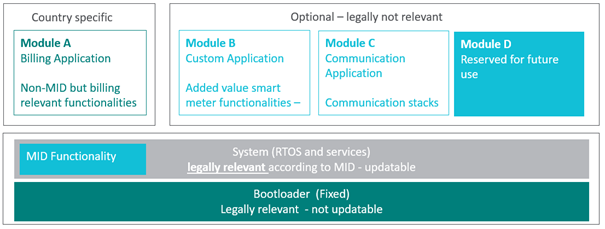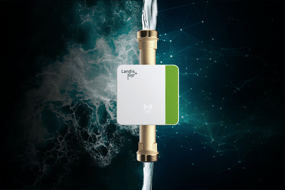 The life expectancy of a smart meter is round about 15 years. In today’s fast-changing world, a lot can happen during that lifetime. 15 years ago, there were no smart phones, voice assistants or smart homes, no WhatsApp or Bitcoin. These innovations changed the world and everything around them adapted. Also, in the energy industry, things are moving rapidly. Ambitious targets to reduce CO2 emissions and the need to grow the share of renewable energy sources or the number of EV charging facilities push for faster technological developments in the space of efficient and secure energy management.
The life expectancy of a smart meter is round about 15 years. In today’s fast-changing world, a lot can happen during that lifetime. 15 years ago, there were no smart phones, voice assistants or smart homes, no WhatsApp or Bitcoin. These innovations changed the world and everything around them adapted. Also, in the energy industry, things are moving rapidly. Ambitious targets to reduce CO2 emissions and the need to grow the share of renewable energy sources or the number of EV charging facilities push for faster technological developments in the space of efficient and secure energy management.
Long smart meter investment cycles meet fast smart grid development
So, when the long investment cycles of the metering business meet the dynamic environment of digital energy management solutions, you have a clash of circumstances that must be resolved. The meter design and firmware structure need to be flexible enough to adapt to new requirements without complex reparametrization and recertifications of the existing smart meter infrastructure.
We addressed this challenge in the new firmware design of our residential meter E360. The goal was to secure a future proof design that allows utilities to maximize their asset usage by being able to upgrade the meter functionalities to match future smart grid solution needs. Where currently billing and security might be priorities now, advanced smart grid use cases with complex interconnectedness of multiple internal and external systems and data sources might move to the foreground in three, five or ten years.
Modular firmware design taken one step further
The device needs to be perceived as an integral part of the smart grid and should be managed as a component of the entire solution stack. A modular firmware structure makes this possible; being able to host “function blocks” for different applications and data consumers plus a hardened security aspects support this approach.
The E360 has a Common Criteria certified RTOS-based (Real-time Operating System) modular firmware structure that makes upgrades simpler and more efficient, to provide extra capacity and to keep the door open for future system integrations. It not only separates the – according to MID standards - legally relevant parts of the firmware for which you need a re-certification when something is changed from the non-legally relevant parts. These “non legally relevant parts” do not contribute to the measurement accuracy, so a utility does not need to re-certificate their metering park when they are, for example, updating the communication stack. This split of the firmware is not new per se, but with the E360 we have taken this concept one step further.

We have created additional modules for upgrades that do not affect the certification, such as country-specific modules for local mandatory functionalities and modules for optional applications. By doing this, we have also separated the most volatile parts from the more stable ones to have generally less hassle and disturbances around deployment or operational adjustments in the field.
Prepared for what comes next: One extra firmware module
Unique here is one extra firmware module which provides controlled headroom for future developments because the way and how new functionalities are being developed is changing, too. Today, the development is with the meter manufacturer, but in the future, this is bound to open up. Third--party developments will find their way into the smart grid solution and with that, the extra module could be a space for third-party applications. With the flexibility of the re-designed modular firmware concept, the electricity meter becomes a crucial part of the larger, fast-moving energy management environment while at the same time relying on the longevity of its lifetime.





